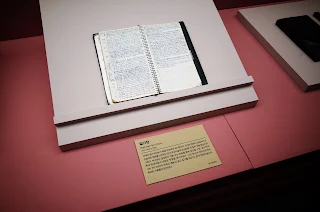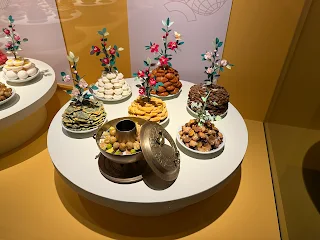A Gwanghwamun Office Worker's Winter Lunchtime Stroll: Encountering the Donated Artifacts Special Exhibition at the Seoul Museum of History
Where Personal Stories Become History
The 'My Treasures, Our Modern History' special exhibition at the National Museum of Korean Contemporary History was a unique event that showcased how precious objects in an individual's life become pieces of history. From the moment I entered the exhibition hall, I was drawn into the warmth of the memories of the past. I'm recording the emotions and memorable scenes I experienced through this exhibition.
Artist Park Seo-bo's Diary: The Fierce Life of an Artist
The first thing that caught my eye as I entered the exhibition was Park Seo-bo's diary. His diary wasn't just a record of day-to-day life; it was filled with the artist's worries and passion. I could see his intense life through the densely written words, and I could feel how important the process itself is, not just the outcome, in art. Looking at this work, I felt the urge to leave my own records.
Poet Moon Jung-hee's Poetry Collection: The Consolation Literature Provides
On one side, a poetry collection by poet Moon Jung-hee was displayed within a frame designed like a window. This collection of poems held more meaning than just a book. The work, which revealed the poet's delicate sensitivity and the historical context of the time, reminded me of how much literature gave people comfort and inspiration. Looking at the poetry collection, I unconsciously recalled a line of poetry, and at that moment, I felt as though the past and present were connected.
The Power of Music That Transcends the Eras, the Album of the Forbidden Song, 'Camellia Lady'
What particularly impressed me was the album of the famous forbidden song, 'Camellia Lady'. The song was incredibly popular when it was released in 1964, but it was later banned from broadcasting for its "Japanese-ness." However, it was interesting that despite being labeled a forbidden song, it was consistently loved by people. It made me realize once again that music has the power to move people's hearts across eras.
Montreal Olympics in a Black and White Television
In another area of the exhibition hall, an old television showing wrestling match scenes from the 1976 Montreal Olympics caught my eye. The sweat and passion of the athletes on the black-and-white screen made me imagine how much hope and pride it gave the people of that era. Seeing the image of families gathered in front of the television cheering, I felt as if I had briefly returned to that time.
Stories of Ordinary People in Photographs
Lastly, the photographs that adorned the exhibition were truly moving. The photographs, displayed under the phrase "My story becomes our history," depicted the daily lives of ordinary people. A merchant selling goods in the market, a craftsman making pottery, and a *haenyeo* (female diver) working at the seashore – each photograph vividly portrayed their lives and stories. The unique emotion of black-and-white photos gave a deeper feeling, and I was able to naturally immerse myself in their stories.
In Conclusion...
The 'My Treasures, Our Modern History' exhibition was a special project that showed how precious objects in an individual's life become a piece of history. If you have a chance, please visit and experience the stories of the small mountains within Seoul at the Seoul Museum of History! And you will be able to gain new insights into the unique landscapes created by the city and nature.






